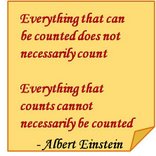What I do for a living was difficult for me to explain about 8 years ago even when I first started work. Over time one would have imagined clarity would have descended upon me and I would not have to fumble or think twice if asked that question. It has only gotten more complex (I wouldn't like to say worse) - thankfully this time...not just for me but for many others who I speak to :)
So here are the interesting bits
For a long time now, there isn't one single organization I have worked for. What started off as freelancing ended up as 'open' work arrangements where I would give only a part of my time to an organization sometimes working with 2 or even 3 of them at the same time ranging from market research to brand communication to retail design. Some days ago, I was called for an interview for a full time position in an advertising agency. Full time was the hitch though the recruitment consultant persuaded me...go ahead and meet them at least. What do you stand to lose anyway? To be honest I felt a little foolish going for a meeting knowing very well I would not be throwing away my existing work contracts. I enjoy the freedom and flexibility of working in diverse areas. I called a friend (a veteran ad professional) to ask her whether i could suggest to this agency the possibility of working as consultant...would it sound too outlandish ? Her response took me by surprise. Are you kidding me she said, who in this day and age commits all their time to one organization! Now I know that might not be a universal truth but it is becoming more and more prevalent. She then went on to cite the instance of another advertising professional she knew who worked at two competing ad agencies at the same time and they both hired him knowing very well he worked with a competitor. On his part he had to tread the confidentiality line cautiously. But that is not an impossibility.
A conversation with another colleague whose career graph has moved from teaching to copy writing to information design on social media and writing for children, was about how as professionals it is imperative today that we invent and reinvent ourselves, else start feeling obsolete. Gone are the days when people specialized in one core skill and stayed with it for their lifetime.
A few others I know mention that whenever they need to switch jobs it is close to impossible to seek help from a recruitment consultant since those consultants who are used to understanding the water-tight world of neatly chalked out job definitions very often do not understand what kind of a job role to fit them into and therefore end up randomly matching key words and sending them leads which do not make any sense
Some one else (an enterprising digital marketing consultant) saw this as an opportunity to offer resource management as a supplementary skill to his clients. He has been with the industry long enough to understand the kind of people that would best fit the requirements of this industry. Digital marketing being a relatively new area, there is little chance for anyone to find people with a specific degree or academic lineage that would be a straight fit. Brand planning is another such specialization I am told. It is a decade old practice in many agencies in India. In the initial days client servicing guys who understood the agency business well graduated to brand planning.With the field maturing and competition intensifying there is a need to hire 'specialists'. Ironically the specialist could come from (not advertising but) a related industry -brand communication or research / consumer insight agencies.
So what is all this leading to...
- Going forward we may see open organizations - lose collaborations between working professionals who come together for a project.
- Open job definitions - I have already seen this happening in some organizations which are lean and each employee plays more than one role. So the brand planner also doubles up as a copy-right expert and the office boy also offers basic IT support. And all this is possible made due to the sheer appetite to learn
- Maybe more 'generalizations' rather than 'specializations' in academic programs. Today's newspaper carried an advert of a private university in Gujrat offering a program in liberal studies - a choice based learning approach where one could chose to study music and economics as electives perhaps. How one applies these unique skills to earn a livelihood would be a challenge but an interesting one at that !
- And on a more fundamental level - it would allow us to define our own benchmarks, boundaries of competition and metrics of success. After all how many people do you know who combine knowledge about consumer insights and the subconscious mind with maybe retail design? :)


